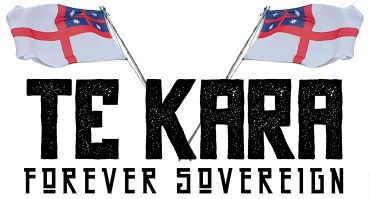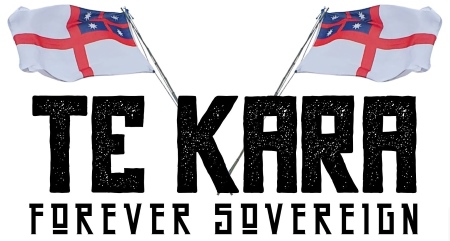The Wakaminenga Maori Government (WMG) is a modern entity that seeks to revive and operationalise the principles of He Whakaputanga o te Rangatiratanga o Nu Tireni (the Declaration of Independence of the United Tribes of New Zealand 1835) and Te Wakaminenga o Ngā Hapū o Nu Tireni (the Confederation of United Tribes). It represents a contemporary effort to assert Maori sovereignty (tino rangatiratanga) and establish a framework for Maori self-governance, based on the historical foundations laid by He Whakaputanga in 1835.
It is important to understand that this is an administrative organisation that facilitates and supports the constitutional republic of Nu Tireni, not a top down authority such as the NZ Government and other centralised government structures.
It is also important to know that it is open to all people of Nu Tireni/New Zealand, as the Rangatiratanga invited all other tribes (including all other races) to join the jurisdiction under He Whakaputanga.
WMG is a legitimate Maori governing body, operating in parallel to the New Zealand government, asserting Maori sovereignty based on the historical declarations of 1835.
- Revival of Te Wakaminenga:
- The Wakaminenga Maori Government is the modern successor administration to continue Te Wakaminenga o Ngā Hapū o Nu Tireni. It seeks to restore the confederation of hapū (sub-tribes) and iwi (tribes) as a governing authority for Maori.
- This revival is based on the fact that He Whakaputanga was never extinguished and that Maori sovereignty remains intact under international law.
- Assertion of Tino Rangatiratanga:
- The Wakaminenga Maori Government asserts tino rangatiratanga (absolute sovereignty) over Maori lands, resources, and affairs. It challenges the authority of the New Zealand government and the Crown, acknowledging and promoting that Maori never ceded sovereignty under the Treaty of Waitangi.
- This assertion aligns with the findings of the Waitangi Tribunal, which has recognized that Maori did not cede sovereignty in the Maori text of the Treaty (Te Tiriti o Waitangi).
- Parallel Governance:
- The Wakaminenga Maori Government operates as a parallel governance structure, providing a framework for Maori self-determination. It aims to administer Maori affairs independently of the New Zealand government, particularly in areas such as resource management, justice, and cultural preservation.
- This approach reflects the principles of He Whakaputanga, which envisioned Maori governing themselves as an independent nation.
- International Recognition:
- The Wakaminenga Maori Government has sought international recognition as a legitimate governing authority. It argues that He Whakaputanga established Nu Tireni (New Zealand) as an independent state under Maori sovereignty and that this status should be recognized under international law.
- This effort is part of a broader movement by indigenous peoples worldwide to assert their sovereignty and gain recognition on the global stage.
Challenges and Controversies:
- British Crown Opposition:
- The New Zealand government still has not officially accepted the Wakaminenga Maori Government as a legitimate authority as it has faced enormous complications when the formal Waitangi Tribunal report released it’s conclusion. The NZ Government has attempted to assert it’s laws against WMG in various trials (see NZ Minister of Health vs WMG high court case link here) but was unable to provide any evidence that they held jurisdiction to administer anyone under He Whakaputanga.
- Internal Maori Divisions:
- Not all Maori iwi and hapū support the Wakaminenga Maori Government. Some view it as a northern initiative that does not represent the interests of all Maori, while others prefer to work within the existing Treaty settlement process.
- These divisions highlight the complexity of Maori governance and the challenges of achieving unity across diverse iwi and hapū.
- Legal and Political Barriers:
- The Wakaminenga Maori Government faces significant legal and political barriers to achieving its goals. New Zealand’s legal system is based on the assumption of Crown sovereignty, and there is no formal mechanism for recognizing parallel governance structures. The High Court of New Zealand has had several cases against Maori Sovereigns of which the outcomes are not always in favour of the sovereigns, due to the assertion of the NZ Government’s ‘abrogated authority.’ An example of this is shown below, from the NZ Government’s ‘justice.govt.nz/courts/decisions/jdo’ website.
[48] Accordingly, and as Venning J noted (citing Chambers J in Creeks v R) when allocating the summary judgment and setting aside applications for hearing :15 [16] While the Courts have recently acknowledged the place of tikanga in an appropriate case, the Courts have routinely rejected claims that individuals are not subject to the laws of New Zealand passed by Parliament or that the Courts have no jurisdiction over Māori [sic – note difference in usage of Maori and Māori, to see who is being referenced here] or other people who decline to recognise the authority of the Court.16 Such arguments are not tenable:17 [7] The Court of Appeal has made it clear that the courts are not the forum for a fundamental challenge to the entire constitutional structure of the country or for political campaigns of the sort the appellants are waging. Māori sovereignty can be the subject of debate in Parliament. The Waitangi Tribunal may be prepared to consider it. It can be debated in public meetings or the media. It may be the subject of lawful protest. But an assertion of Māori sovereignty does not raise a justiciable question. It cannot succeed in the general courts of New Zealand. Accordingly, this point should not be submitted to the Court of Appeal. [49] In short, and to the extent the defendants assert that the signatories of He Wakaputanga (the Declaration of Independence of 1835) did not cede, and their 14 15 16 17 Ellis v R, above n 6. Director-General of Ministry of Health v Wakaminenga Kaunihera Hauora Health Council HC Auckland CIV-2022-404-847, 7 October 2022. Creeks v R HC Auckland A138/00, 6 November 2000; Morunga v Police [2016] NZCA 599; Wallace v R [2011] NZSC 10; Phillips v R [2011] NZCA 225; and Yates v R [2019] NZCA 155. Creeks v R, above n 16. descendants have not ceded, legislative authority, whether that is correct or not is beside the point: Parliament has acquired it. 18 The two streams have now merged.
Perhaps this is a case for the International court, this may in fact be an outcome in the near future.
Significance and Legacy:
The Wakaminenga Maori Government represents a bold effort to revive the principles of He Whakaputanga and Te Wakaminenga and to assert Maori sovereign jurisdiction in the modern era. Its existence underscores the enduring relevance of He Whakaputanga as a symbol of Maori independence and self-determination. While it faces significant challenges, the Wakaminenga Maori Government serves as a powerful reminder of the unresolved issues of sovereignty and jurisdiction in New Zealand and the ongoing struggle for not just Maori, but all people of Aotearoa, and their inalienable rights and freedoms.


